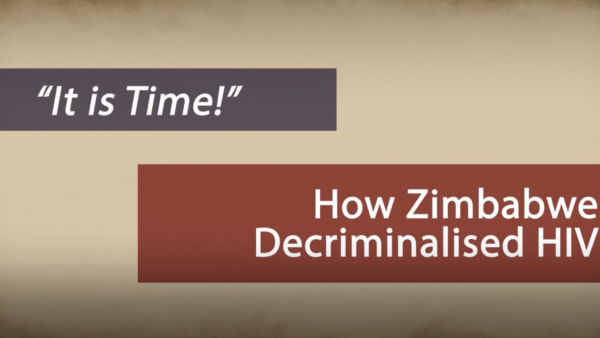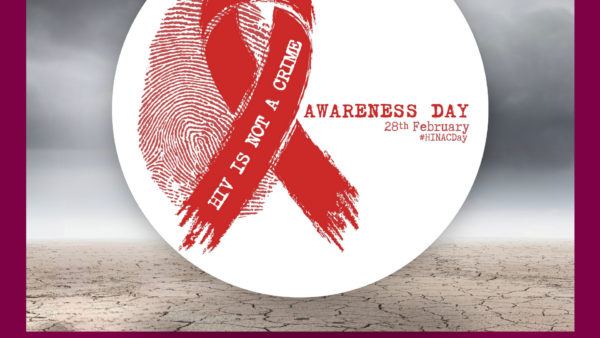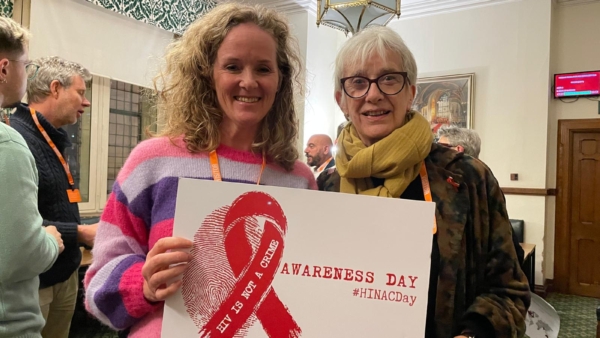
U=U acknowledged in prosecutors’ guidance in England and Wales
New Crown Prosecution Service guidance on cases of alleged HIV transmission state that an undetectable viral load stops HIV transmission. While the previous guidance stated that a person’s viral load at the time may provide a defence because it was believed to reduce transmission risk, it did not clearly set out the medical consensus is that this risk is zero. Cases should no longer be taken to court in England and Wales when a person has an undetectable viral load and is aware that Undetectable = Untransmittable (U=U).
In England, Wales and Northern Ireland, concealing or lying about living with HIV is not viewed as a sexual offence. This is unlike jurisdictions that have specific HIV non-disclosure laws. However, reckless or intentional transmission of an STI is viewed as a form of grievous bodily harm that can result in criminal charges.
Since 2019, the National AIDS Trust has been working with the Crown Prosecution Services (CPS) to update their guidance to accord with medical knowledge regarding the lack of risk if someone has an undetectable HIV viral load. The latest guidance issued last week clearly specifies the conditions that must be met for a charge of this nature to occur. Importantly, this only applies to sexual transmission and not to other modes, such as needle-sharing.
Prior to seeking out expert witnesses to rule out other sources of infection, and to confidently ascertain if one person transmitted HIV to another, prosecutors need to work through a series of conditions that need to be met for there to be sufficient evidence for a criminal charge. Gathering information for these conditions involves police investigation and will likely be intrusive for both the accuser and the accused.
To begin with, the person making the accusation must have an STI that amounts to a form of grievous bodily harm. While this harm need not be either permanent or dangerous, it should require treatment and have lasting consequences. Based on previous court judgements, the two STIs that qualify are HIV and herpes. Since 2001, there have been more than 30 people convicted of reckless HIV transmission, one of intentional HIV transmission and one of recklessly transmitting herpes in England and Wales. The rest of this article will focus on cases related to HIV.
The second condition is that the accused must have HIV at the time of having sex with the accuser. This can be proven in several ways, including via medical records, during interrogation or upon the discovery of medications such as antiretrovirals.
The next condition is that the accused knew they had HIV at the time of sex. If they were unaware of their status, and only diagnosed or became aware after having sex with the accuser, there would be insufficient evidence to meet this condition. If the couple had sex multiple times, and the accused was diagnosed or became aware during this period, it would similarly be difficult to prove that they knew their status at the time of transmission. Additionally, it could be the accuser who transmitted HIV to the accused, instead of the other way around. Thus, prosecutors need to carefully consider dates of diagnoses and other relevant evidence.
This condition is not completely straightforward: there is the possibility that the accused was not necessarily diagnosed with HIV but could otherwise have known they had it (through showing clear symptoms, or transmission to other sexual partners, for instance).
The fourth condition is central to building the prosecution’s case: the person living with HIV must have intended to transmit it or knew there was a risk and went on to have sex with the accuser anyway. Intentional cases of HIV transmission are few and far between.
For most cases – those related to reckless transmission – there are several important factors to consider. If the person living with HIV believed that they took reasonable steps to prevent transmission, such as using a condom or having an undetectable viral load, this could be a defence against this condition. However, as transmission can occur even in the instance that reasonable steps are taken, the central question is whether the accused believed they were putting the other person at a significant risk of HIV infection.
Here, a range of factors need to be considered, including what the accused was told about prevention, their level of infectiousness, their knowledge of how treatment works, whether they understood the information, if they ejaculated inside their partner and the number of sexual encounters. The possibility that inadequate information was provided by the medical practitioner also needs to be considered.
Importantly, the updated guidance specifically references an undetectable viral load. It acknowledges that a person living with HIV with a known undetectable viral load cannot be seen to recklessly transmit the virus if they were relying on their undetectable status as a means of preventing infection. Here, it is crucial to determine if the person living with HIV was undetectable at the time of sex, or whether they believed that they were, based on both viral load tests and consultations with their doctor.
While there is no legal obligation for the person living with HIV to inform their sexual partners of their HIV status, if the accuser consented to sex when they knew their partner had HIV, evidence of this knowledge is a defence against a reckless transmission charge.
The final condition is that the accused (and nobody else) in fact infected the accuser with HIV. The guidance acknowledges that this condition may be challenging to prove, especially in cases where a person has multiple sexual or needle-sharing partners. It is also intrusive and can require a great deal of investigation, time and expert evidence. Thus, this step should only be undertaken when the previous conditions are confidently met. If the prosecution cannot rule out the possibility that the infection came from another sexual or needle-sharing partner, there is insufficient evidence to meet this condition and therefore to prosecute, regardless of whether the preceding steps could be proven.
In the instance that expert evidence is required to prove that the accused infected the accuser, the guidance mentions methods such as phylogenetic analysis. It correctly states that this form of evidence may prove with certainty that the accused did not infect the accuser, but not that they did – as both people could have acquired the genetically similar virus from a third person. Additionally, recency assays can be used to determine whether an HIV infection is recent or longstanding, which can form part of the evidence. There is currently no objective scientific method to determine that one person transmitted HIV to another with complete certainty.
The National AIDS Trust has commended the updated guidance, as it is notable that it aligns with current scientific understanding. However, they also acknowledged that HIV criminalisation remains inherently problematic.
“We believe treating the reckless transmission of HIV as a criminal issue does more harm than good and does not result in reduced transmissions or a greater public understanding of HIV,” they say. “The updates to the guidance can go some way to ensure that cases are handled sensitively and consider the facts around HIV today. It’s essential that the CPS continue open dialogue with people living with HIV, community organisations and clinicians to ensure that the guidance reflects the most up to date evidence and that it is supporting good practice.”
The Crown Prosecution Service. Intentional or reckless sexual transmission of infection. Published online 29 March 2023.








